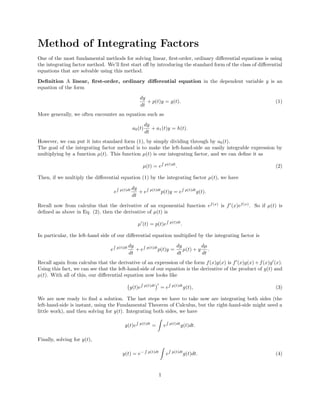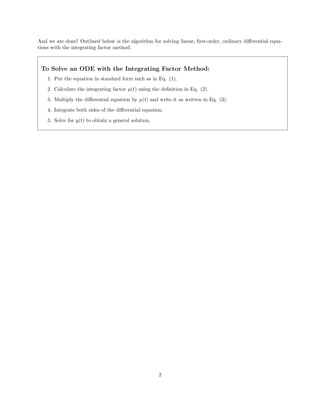The integrating factor method is a fundamental method for solving linear, first-order ordinary differential equations. It involves multiplying the differential equation by an integrating factor μ(t) = e^∫p(t)dt, which makes the left side an easily integrable expression. This allows the differential equation to be written as y(t)e^∫p(t)dt = ∫e^∫p(t)dtg(t)dt. Integrating both sides then gives the general solution y(t) = e^-∫p(t)dt∫e^∫p(t)dtg(t)dt.

